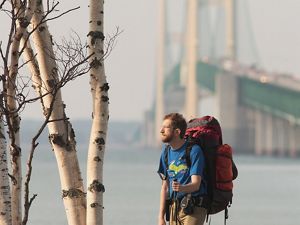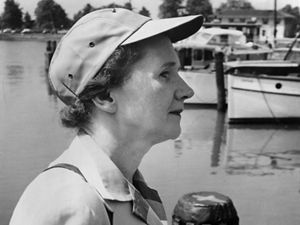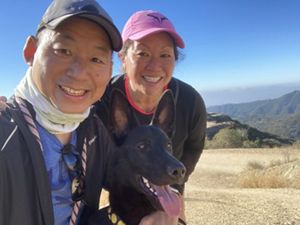Gifts That Provide Income
Manfred Krause and Denise Caldwell share why they established charitable gift annuities with The Nature Conservancy.

Manfred Krause and Denise Caldwell
GROUNDED IN SCIENCE
The field of atomic and molecular physics—an obscure and mystifying subject to most— is what brought Denise Caldwell and Manfred Krause together at a physics workshop in 1985. Already familiar with each other’s work through publications in professional journals, they connected quickly, even embarking on a long-term research project while pursuing their individual careers as physicists. They also eventually married. Denise still works at the National Science Foundation in Arlington, Virginia, and Manfred is retired from a decades-long career at the Oak Ridge National Laboratory in Tennessee.
While Denise’s appreciation for nature developed later in life, Manfred recalls a childhood full of hikes and outdoor explorations near Stuttgart, Germany. Today, the two regularly enjoy nature together, whether walking along the Potomac River near her home or hiking in magnificent mountains out West and abroad.
“We spent our honeymoon in France at a friend’s chalet near the Mont Blanc,” says Manfred. “I guess you could say that that set the stage for our life together enjoying the outdoors!”
As scientists, Denise and Manfred also share a deep respect for the natural world’s complexity, interconnectedness and value to all life on Earth. This is what attracted them to The Nature Conservancy.
“In physics we approach nature from a more technical side which is data-oriented and based on objectivity and tools which ensure you make decisions that are not swayed by emotion,” says Denise. “The Conservancy recognizes the natural world as a very appropriate place to apply scientific study and relies on solid data to inform how to protect whole systems essential to the future health of the planet.”
A LASTING GIFT
The Conservancy’s science-based, collaborative approach is why, over the past decade, Manfred and Denise have established undesignated bequests and life-income gifts to the Conservancy. They are quick to encourage others to explore annuities and long-term giving options with the Conservancy, as well as opportunities to take trips offered to individuals supporting the organization in these ways. To Manfred, the trips provide an opportunity to see first-hand the types of Conservancy projects their long-term gifts will impact. “Supporting nature is a great investment in every sense of the word. The charitable gift approach allows a person to support conservation in the future while taking care of yourself today,” says Manfred. “It is like an endowment. I trust that the Conservancy will use my contribution in the best possible way.”
Like true scientists, Manfred and Denise view their charitable gift annuities as part of a greater whole—as building blocks for future action to preserve the splendor and diversity of the natural world.
“Right now the funds are invested, but then they will roll over to the Conservancy sometime, we hope quite a number of years from now,” she adds. “A gift for now can support now. But the legacy annuities are a gift for the future, I think.”
Manfred endorses his wife’s sentiment, “Conserving as much of our natural world as possible is something we both support. And for both of us, the Conservancy’s grounding in science helps ensure that our investments will pay off.”
Charitable gift annuities are flexible and can be tailored to fit your needs. When you establish a charitable gift annuity with a donation of assets like cash, appreciated securities or real estate, you receive income for yourself or up to two beneficiaries for life. You may also be eligible for significant tax savings now. If you are interested in learning more about life-income gifts, request your personalized gift proposal today.



